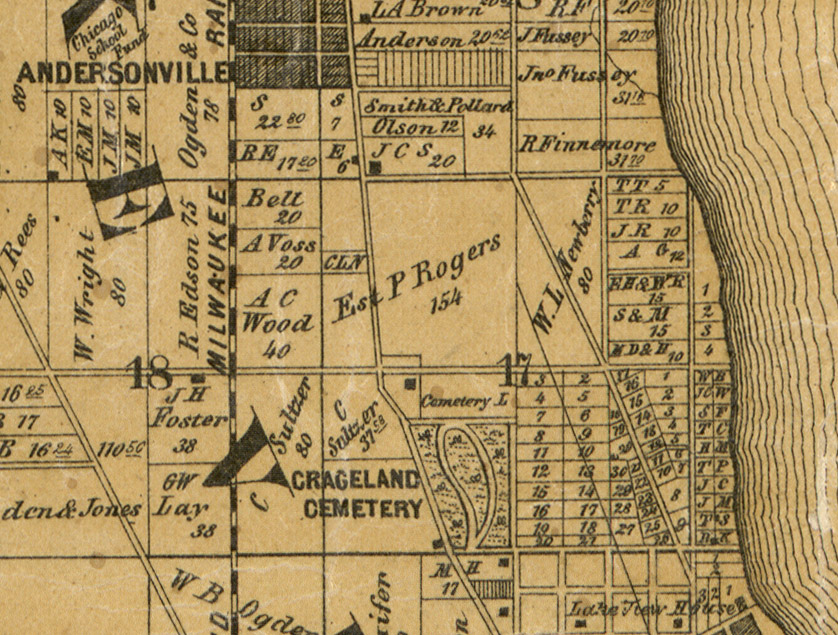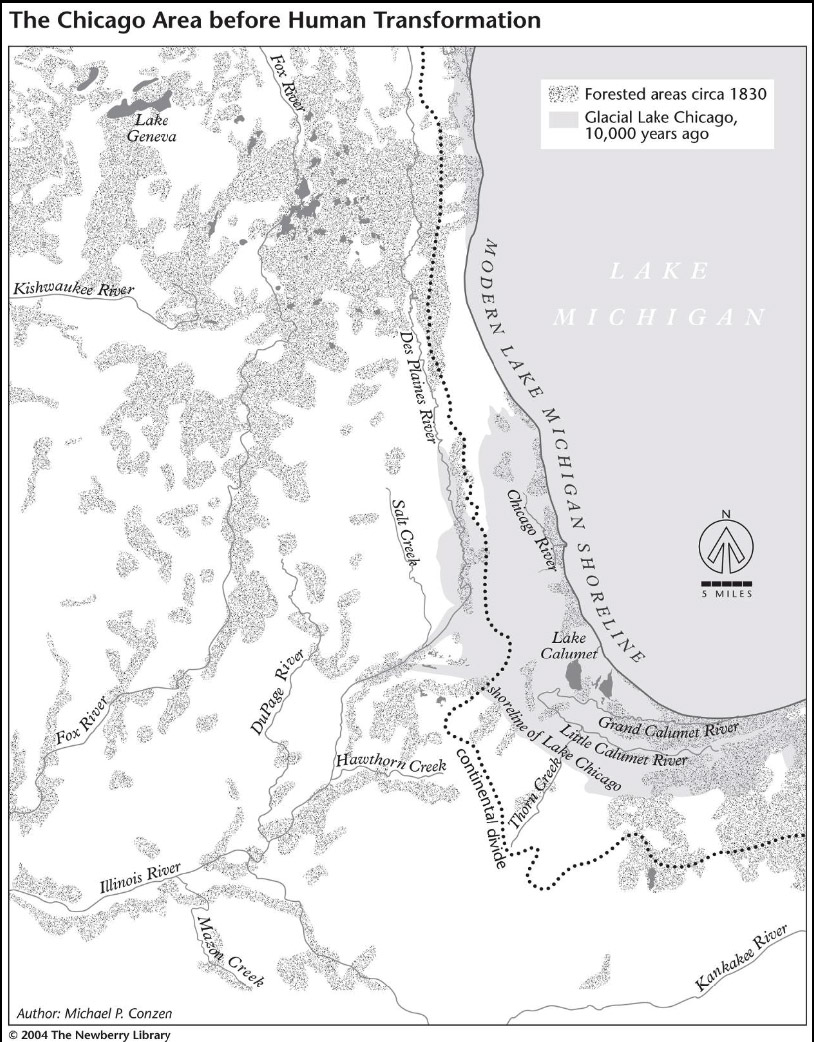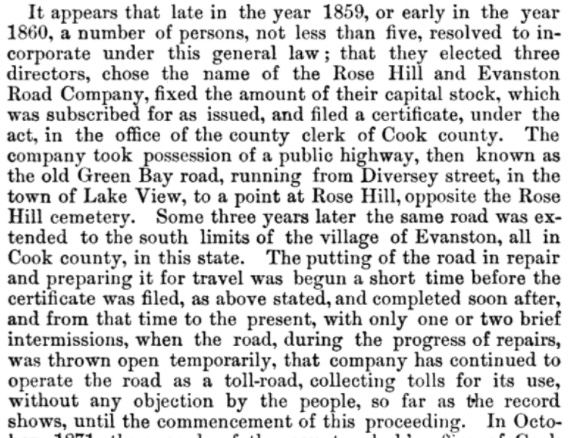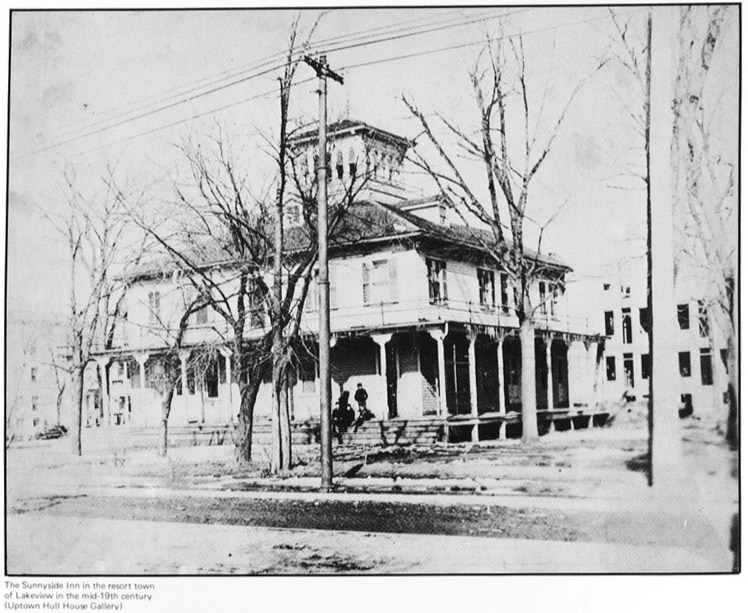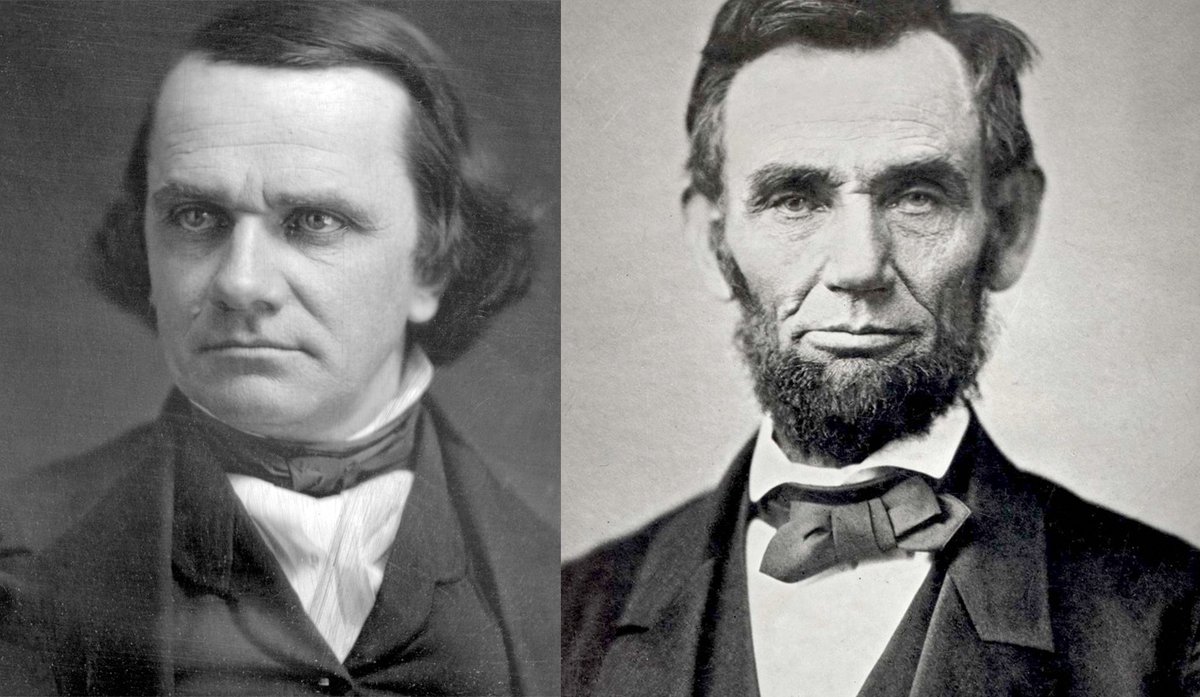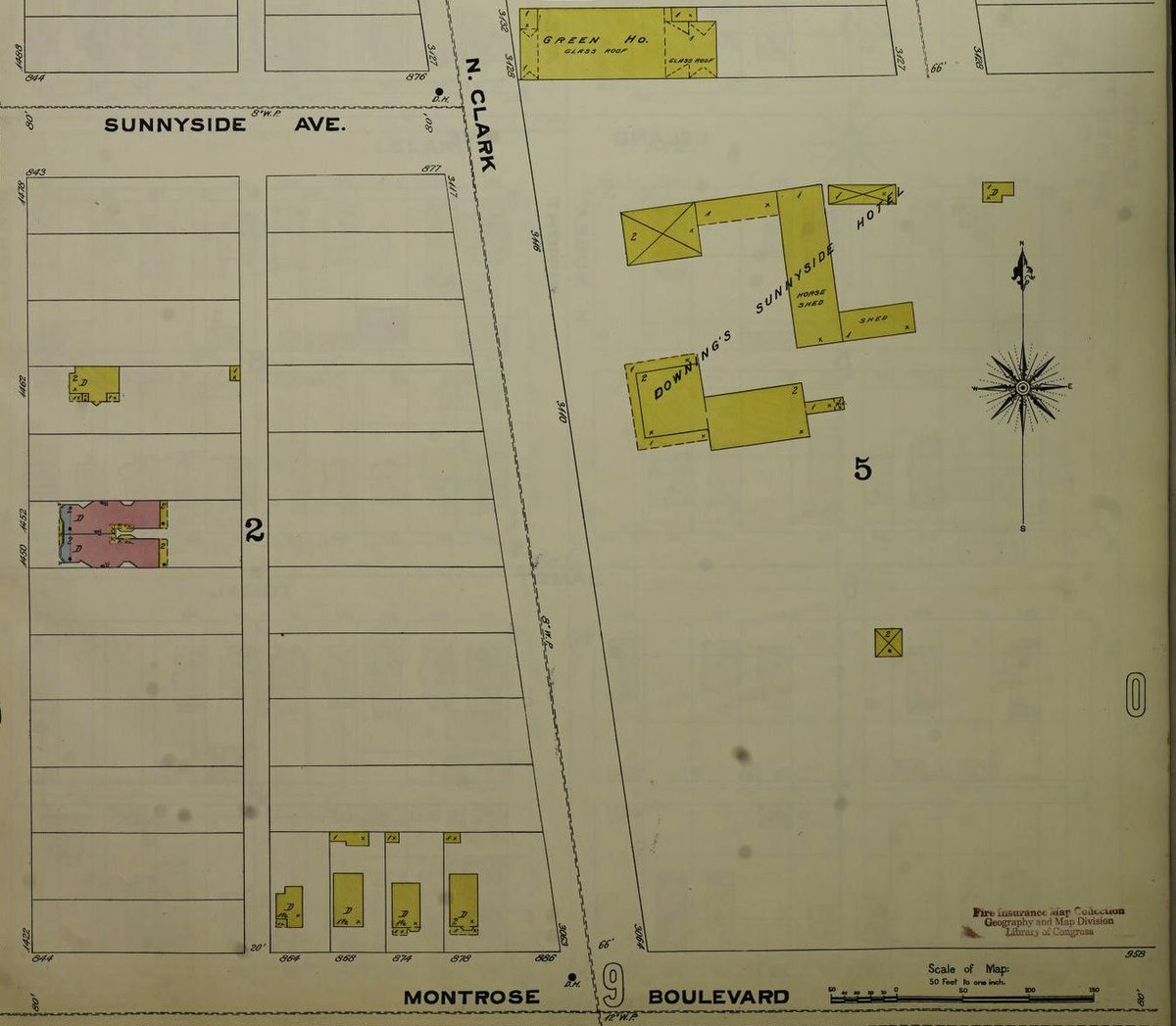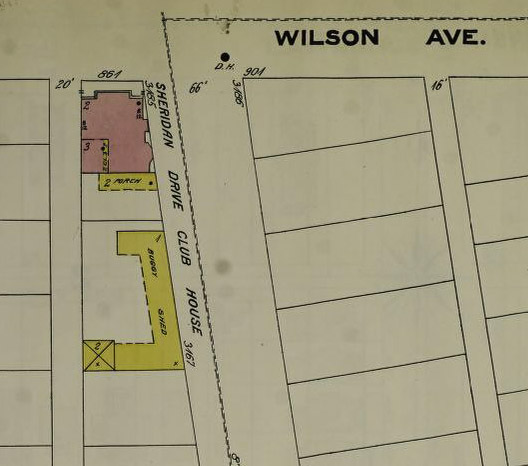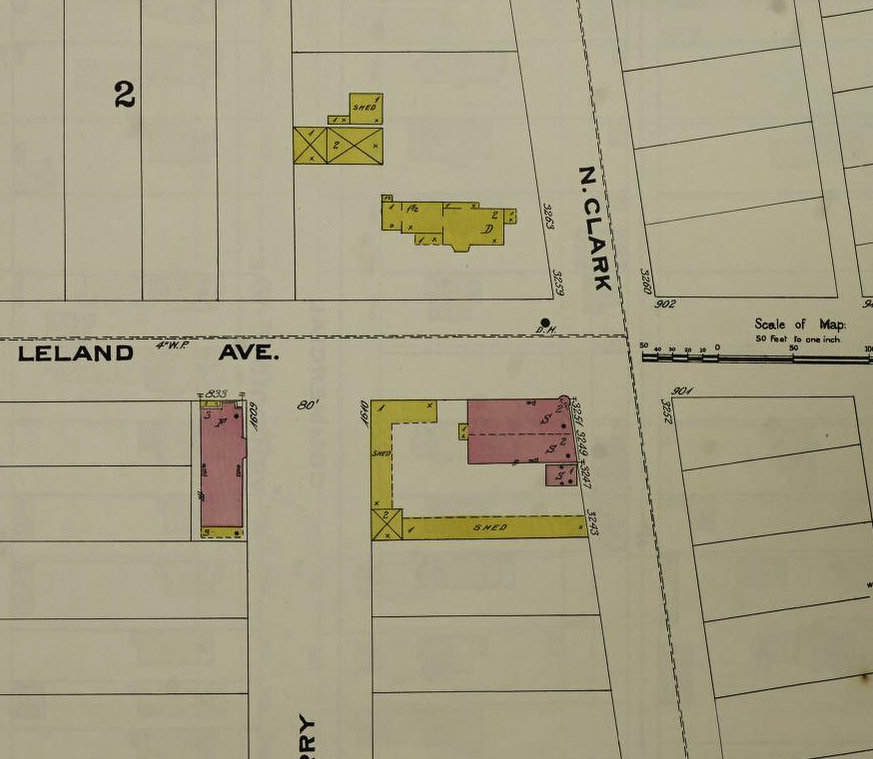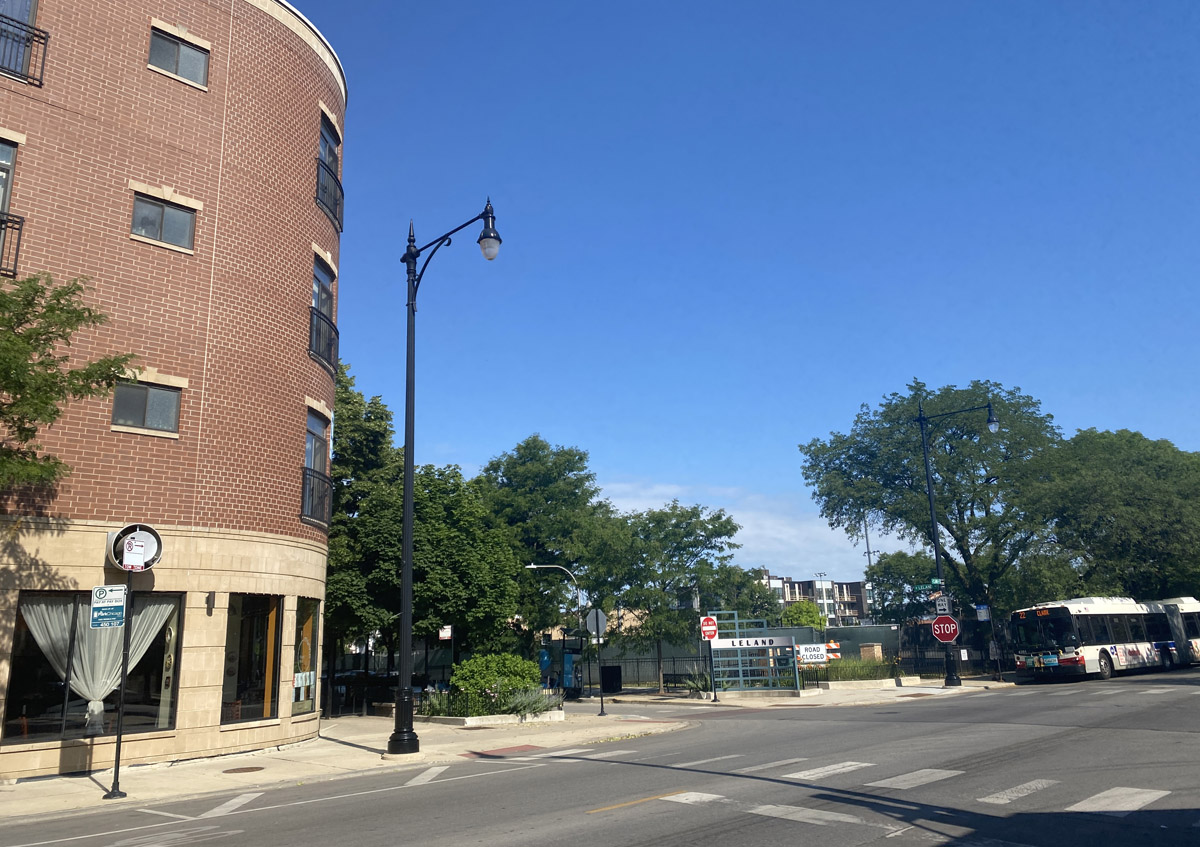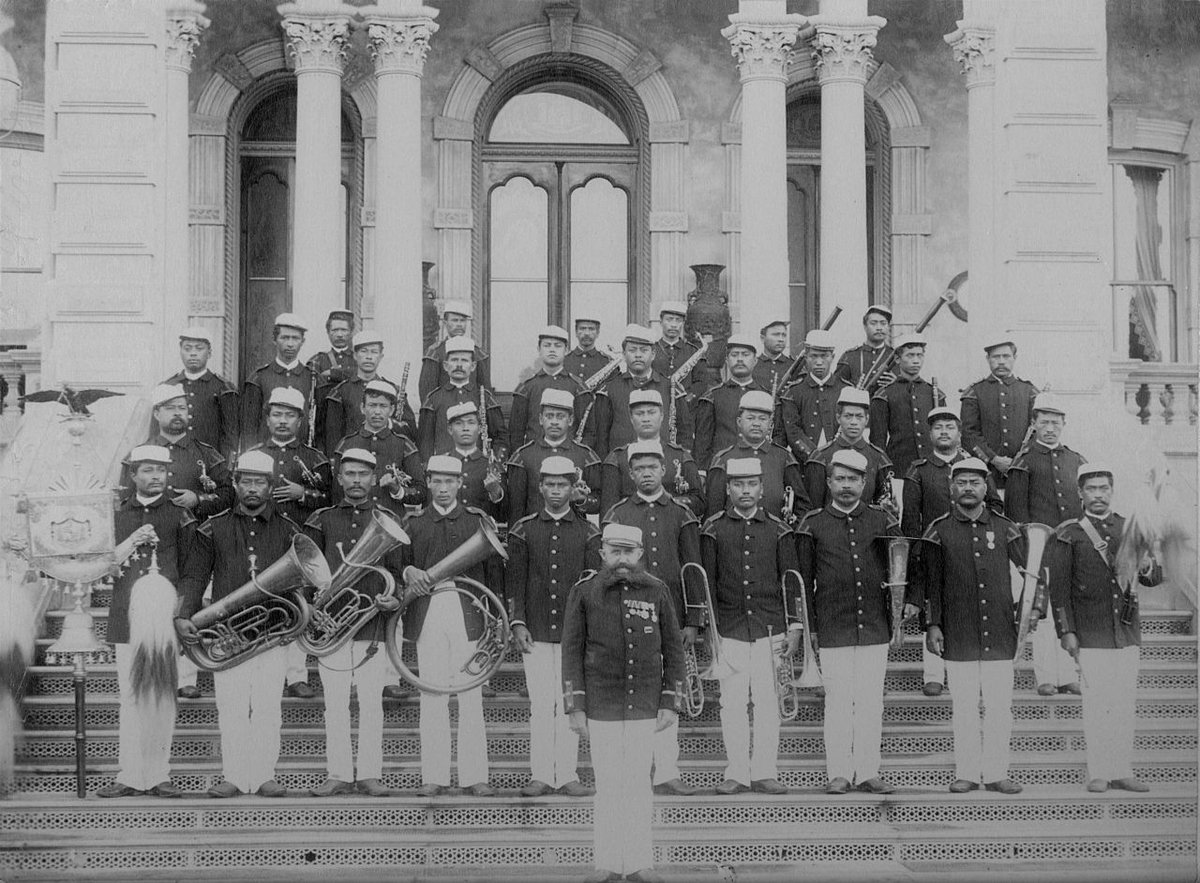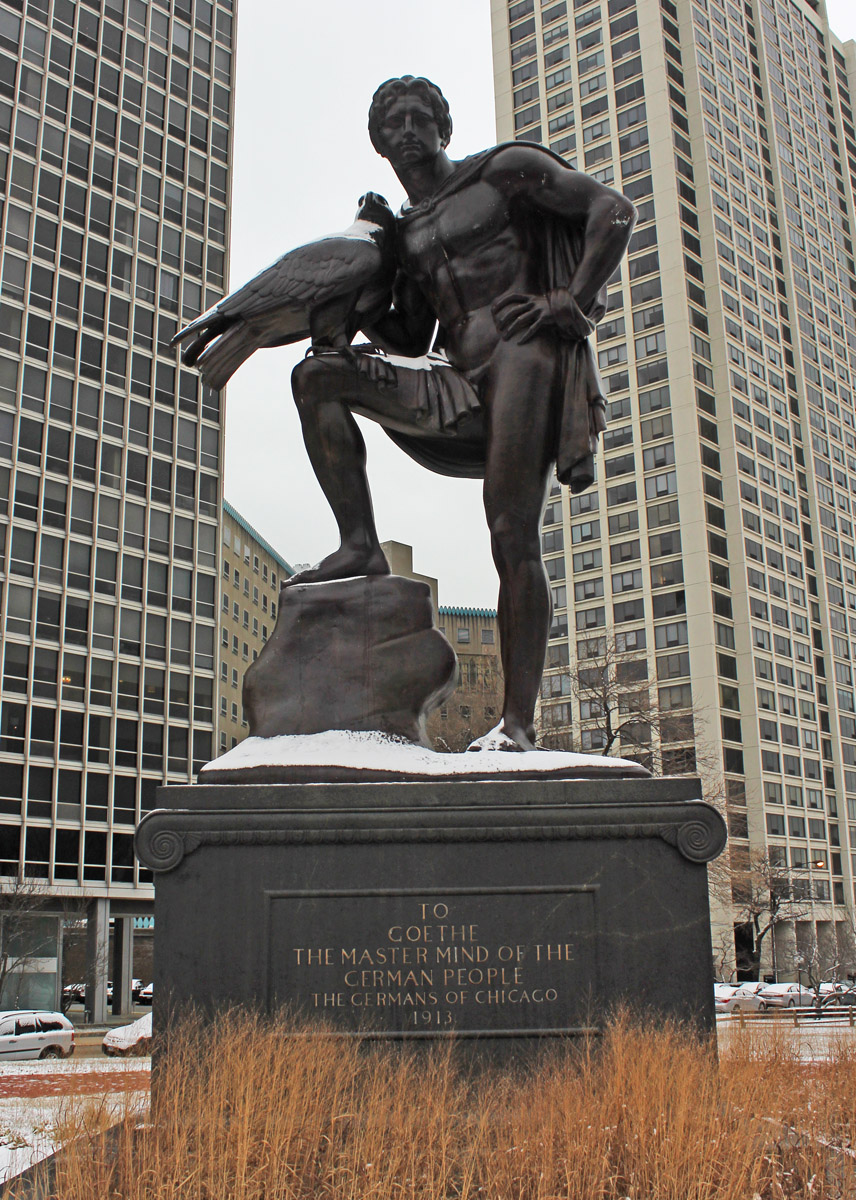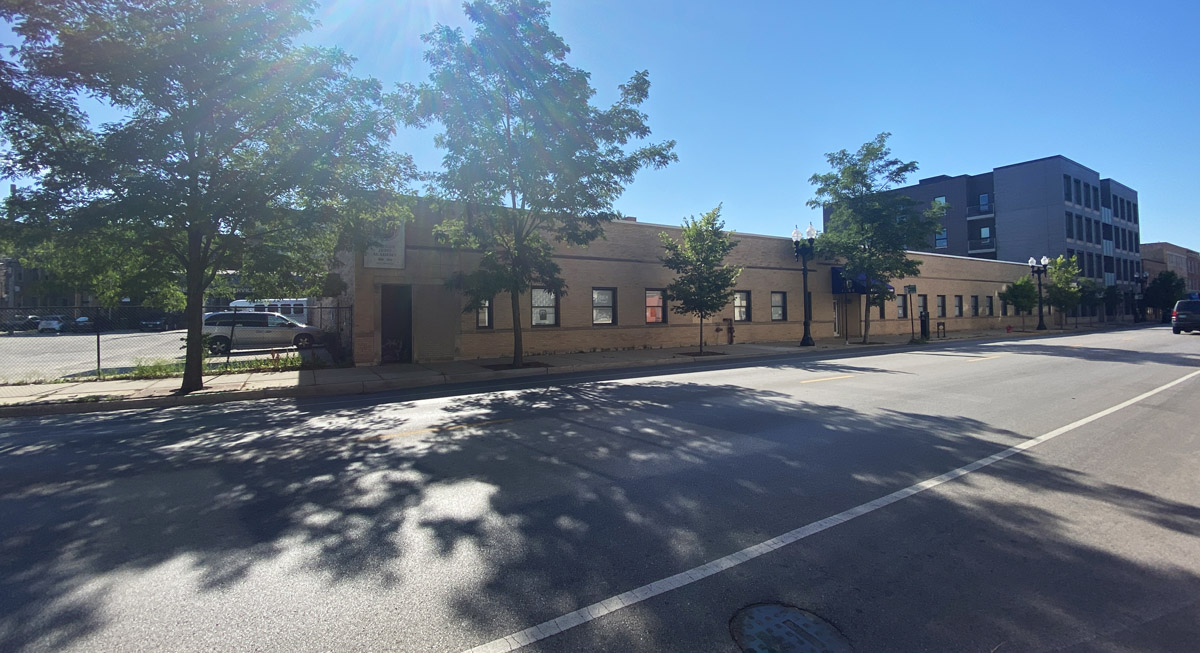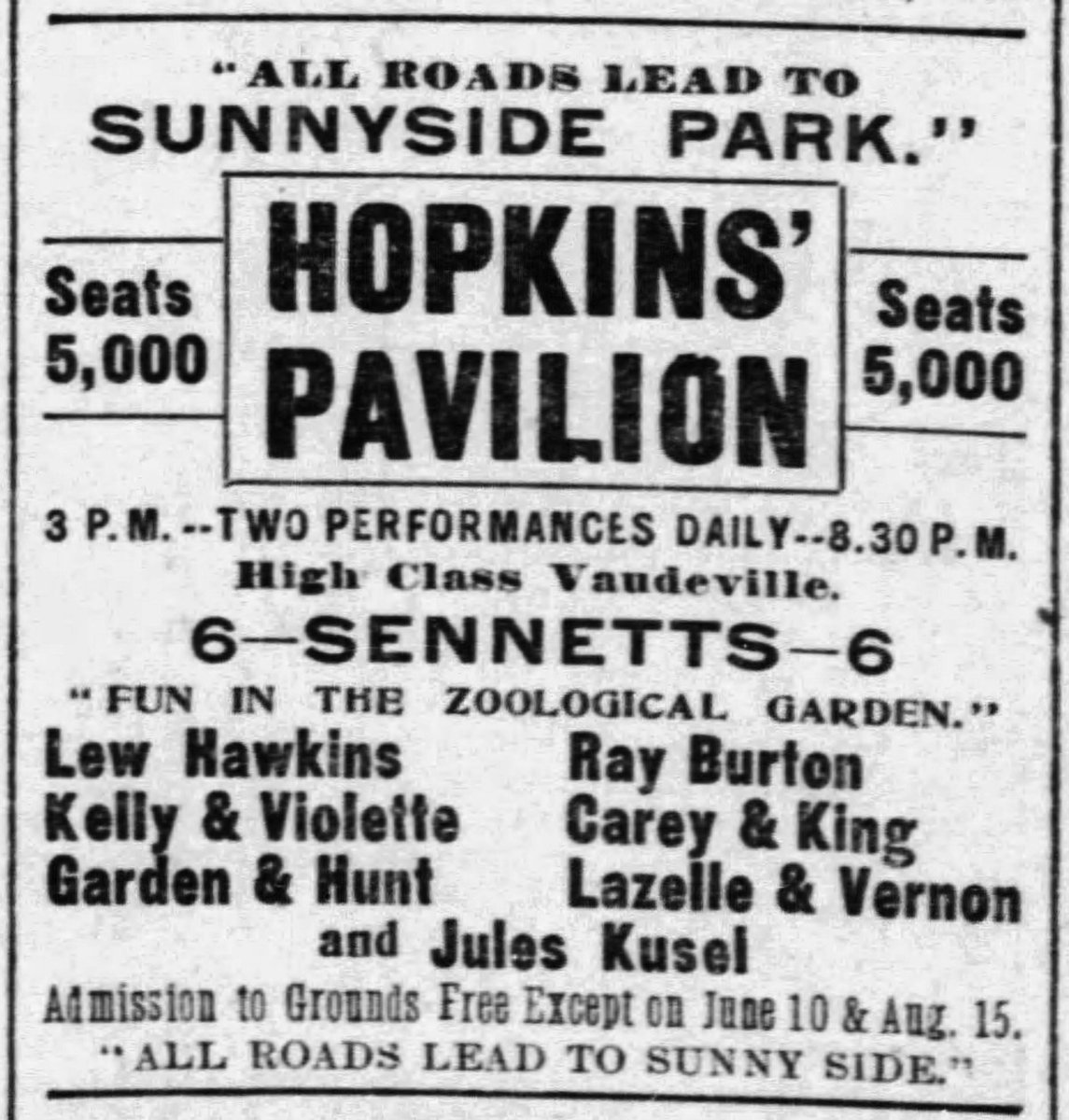THREAD: When I was researching this @WBEZCuriousCity story on Uptown's music venues, I delved into the history of North Clark Street. https://www.wbez.org/stories/from-cemetery-saloons-to-movie-palaces-how-uptown-became-an-entertainment-hub/ff35dc6f-fcde-4ca4-81e5-22fe33947291
Clark Street — formerly called Green Bay Road — was the main corridor through this area of unincorporated Lake View in the 1800s, lined by cemeteries, roadhouses, beer gardens, and picnic areas. Pictured: 1861 map https://www.loc.gov/resource/g4103c.la000104/?r=-0.487,-0.032,1.905,1.257,0
The road was originally a trail used by Native Americans, who followed a ridge in the local topography left behind the retreating glaciers during the last ice age. http://www.encyclopedia.chicagohistory.org/pages/1751.html
For a while, it was a toll road. Circa 1860, the Rose Hill and Evanston Road Company "took possession of a public highway, then known as the old Green Bay road, running from Diversey street … to a point … opposite the Rose Hill cemetery." https://books.google.com/books?id=xoy1AAAAIAAJ&pg=PA276
The toll road company opened a saloon just north of Graceland Cemetery — a joint that eventually became known as the Sunnyside, the area’s most famous roadhouse. It stood on several acres along the east side of Clark Street between what's now Montrose and Sunnyside.
According to @jackilyden's 1980 book "Landmarks and Legends of Uptown," "Stephen A. Douglas and Abraham Lincoln were reported to eat there occasionally." Interesting — but I'd like to see more definitive evidence of that!
During its early years, the Sunnyside roadhouse was a popular gathering spot for drinking, poker games, and prize fights. “There were hot words and hard fights,” according to a story that ran decades later in the Inter Ocean newspaper.
For a while during this era, the Sunnyside racetrack was across the street. https://books.google.com/books?id=WKrNDwAAQBAJ&lpg=PA6&ots=wh78clJnWm&dq=sunnyside%20racetrack%20%22lake%20view%22&pg=PA6#v=onepage&q=sunnyside%20racetrack%20%22lake%20view%22&f=false
After George Downing bought the inn in 1869, the Sunnyside gained renown for his wife Sophronia’s outstanding cooking, especially her steaks.
The book "Chicago by Day and Night" describes a visit to the Sunnyside. "No orders for special dishes are taken. You can take what is there or go without it. But no one was ever heard to complain of the fare." (Note that Downing was misspelled as Dowling in the book.)
Paul Durica and @rogersparkman edited an annotated edition of "Chicago by Day and Night": https://nupress.northwestern.edu/content/chicago-day-and-night
In 1872, when the city was enforcing a law against serving alcohol on Sundays, the Tribune reported that "many young bloods … found their way to the drinking-places beyond the North Side city limits" — including Sunnyside.
Meanwhile, the toll road was "in very bad condition," as Cook County officials said in 1868. In 1876, a petition from residents said it "was in a wretched condition."
According to an 1884 headline in the Inter Ocean, Cook County declared it a free road and abolished tolls. But that didn't happen. A year later, tolls were still being collected, and a county official said the road was "in a most horrible condition."
In 1886, Bryan Lathrop, a representative of people who owned land along the road, told the Tribune it was "little better than an extended mud puddle." He added: "Toll-roads are relics of barbarism, and should be done away with…"
Noting that people visiting Lake View's cemeteries had to pay a toll of 5 to 10 cents, the Inter Ocean declared: "The way the road has been operated is a shame and a disgrace to Cook County."
The tolls apparently ended around the time when a streetcar line was extended north up Clark Street in 1886. Three years after that, Chicago annexed Lake View Township.
In 1890, the Trib wrote about "Funeral Avenue Bars" along Clark. "There are many people to whom the mere presence of these resorts in such obnoxious proximity to the graves of the loved ones who have passed away and been laid to rest in the city of the dead is intolerable."
Here's a diagram of the Sunnyside resort from an 1894 Sanborn-Perris fire insurance map. https://www.loc.gov/resource/g4104cm.g017901894A/?sp=19&r=-0.051,0.268,1.138,0.751,0
The land just east of the Sunnyside was owned by Graceland Cemetery at the time. The land was suggested as part of a potential site for the 1893 world's fair — before Jackson Park was ultimately selected.
Clark Street's resorts also included the Sheridan Drive Club House at the southwest corner of Clark and Wilson Avenue. In 1894, the Inter Ocean called it "a gambling den in which both men and women woo the goddess of fortune." https://www.loc.gov/resource/g4104cm.g017901894A/?sp=19&r=-0.051,0.268,1.138,0.751,0
This "palace dedicated to feminine gamesters" had roulette wheels upstairs, along with faro and stud poker games. "Many of the fair customers are persons well known to society. At no stage of its existence has the Sheridan Drive Club opened its doors to loose characters."
The Sheridan Drive Club House also held horse and sleigh races along Wilson Avenue on snowy winter days. In 1896, it held a fox hunt in the nearby Ravenswood countryside. In 1898, the Royal Hungarian Court Orchestra performed at the club.
The Issel Building, constructed in 1929, now stands at the southwest corner of Clark and Wilson, where the Sheridan Drive Club House was.
Another drinking spot was the Manila Grove or Manila Garden, on the west side of Clark Street at Leland Avenue — across from where Carol's Pub is now. https://www.loc.gov/resource/g4104cm.g017901894A/?sp=25
Simon's Grove was nearby. Maps show a dancing pavilion, saloon and bowling alley southwest of Clark and Lawrence, kitty-corner from St. Boniface Cemetery. Farther north was Biewer's Garden — the site where Rainbo Gardens opened later.
In 1895, the Sunnyside began advertising outdoor concerts, with seating for 8,000. It sounds like an 1890s German American version of Ravinia.
Performers at Sunnyside Park included the Royal Hawaiian Band, German and Swedish choirs, opera troupes, military bands, and an orchestra. Photo: Royal Hawaiian Band circa 1889 https://www.rhb-music.com/about
Vaudeville shows were added in 1897, and motion pictures — including one described as “the Spanish Bull Fight” — were shown in 1899 with a device advertised as the “Justoscope.”
In 1899, residents in the area complained about these "disreputable resorts" that were serving alcohol on Sundays. (They also mentioned a nearby spot called Shadyside Park.)
The Sunnyside's John H. Colvin called them hypocrites. "Last year 100,000 people visited our place and church picnics were held there. I would have told them that they were condemning their own people."
Forty thousand people filled Sunnyside Park on Sept. 3, 1899, to celebrate the 150th anniversary of the German author Goethe’s birth. It was a HUGE performance, featuring about 2,000 singers and musicians!
This event aimed to raise money for a statue of Goethe in Lincoln Park. Herman Hahn's sculpture of Goethe was installed in 1911 in the park, where it still stands today. https://www.chicagoparkdistrict.com/index.php/parks-facilities/johann-wolfgang-von-goethe-monument
In 1900, the venue’s advertisements proclaimed: “All Roads Lead to Sunnyside Park.” Actually, the opening of the new elevated railroad in 1900 was attracting more development to the street now called Broadway.
Sunnyside Park shut down in 1903. The land was subdivided into 72 lots, which are now part of the Sheridan Park neighborhood. The old Sunnyside complex was approximately where the Japanese American Services Committee is today, across the street from the @blackensemble Theater.
A few footnotes: I asked @whitecitycinema and @adamselzer — authors of "Flickering Empire: How Chicago Invented the U.S. Film Industry" — about that "Justoscope" machine. Here's what Michael said: https://twitter.com/whitecitycinema/status/1244001968592424960?s=20
Note how that ad from 1900 mentions a vaudeville show by the 6 Sennetts, "Fun in the Zoological Garden." I wonder if that group was connected with "King of Comedy" Mack Sennett? https://en.wikipedia.org/wiki/Mack_Sennett
And look how the neighborhoods are labeled on that 1861 map. Andersonville is shown over on the west side of the railroad tracks, near where Winnemac Park is today. The area around Clark Street and Ridge Avenue is called Henrytown.

 Read on Twitter
Read on Twitter